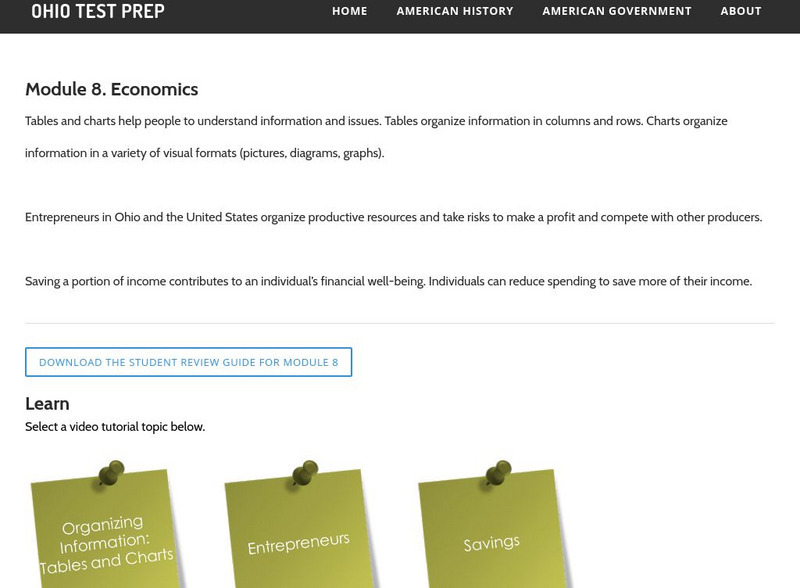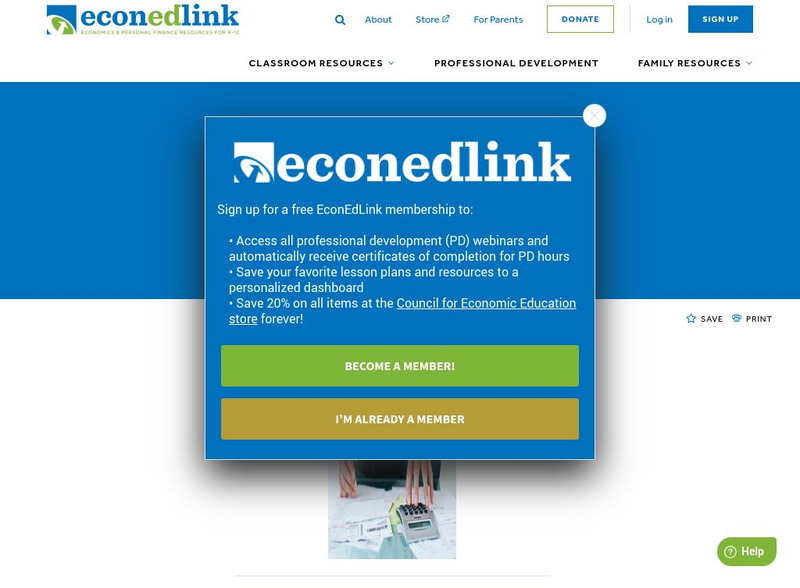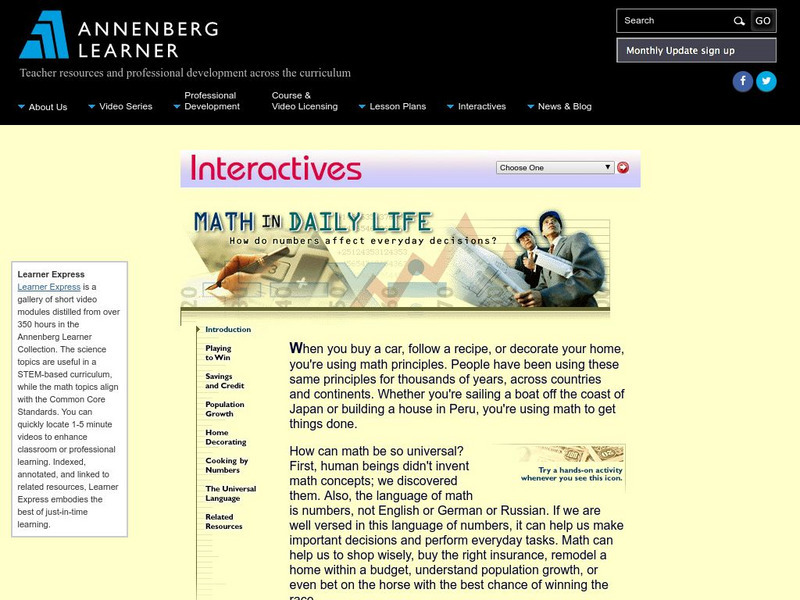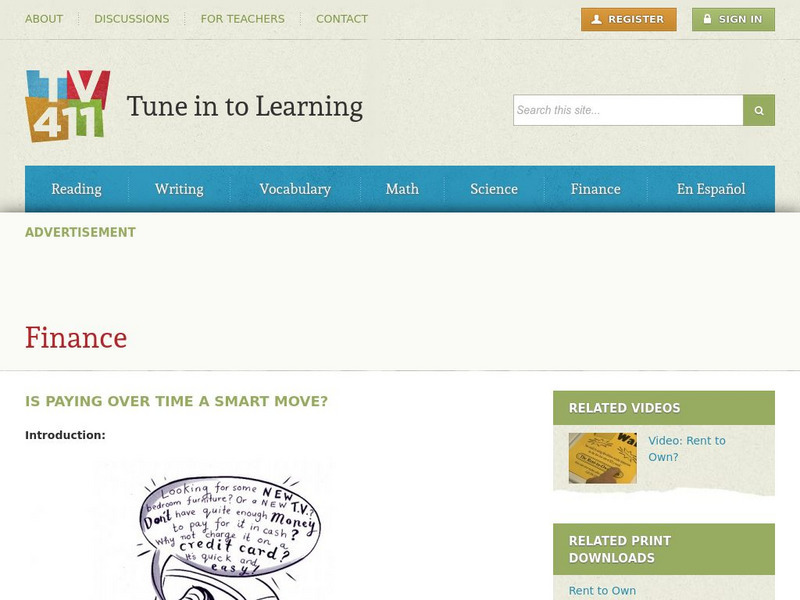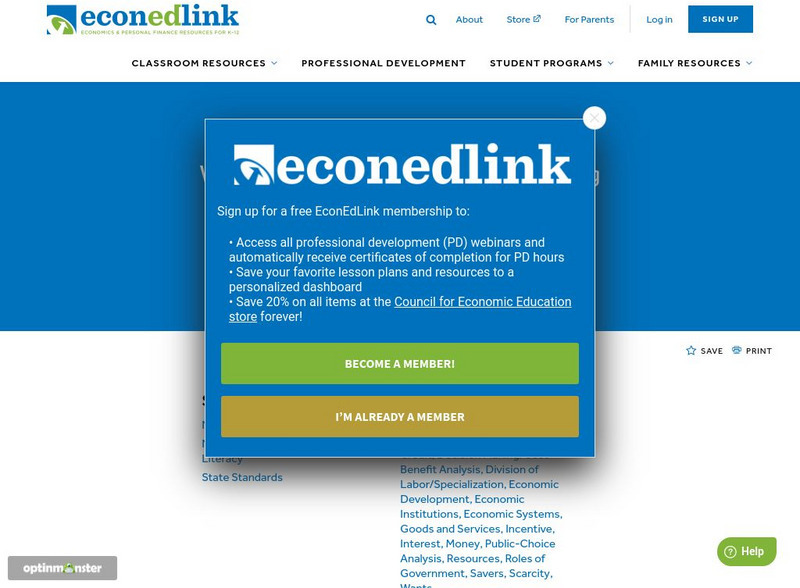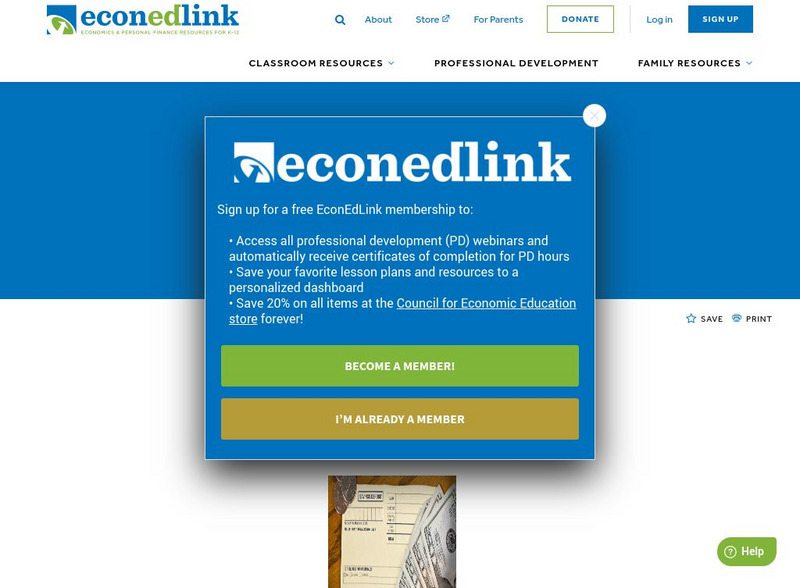Other
Treasury Direct: Money Math: Lessons for Life: Math and Taxes:a Pair to Count On
Students have the opportunity to see how the money they earn is dependent, to a great extent, on the education they gain, by examining occupations and salaries. They then will use pay stubs and tax tables to learn what happens to the...
Council for Economic Education
Econ Ed Link: Every Penny Counts
Lesson that helps students understand that people must make choices about the goods and services they purchase. Students recognize the prices indicate what people pay for goods and services, learn to compare prices, and understand that...
Federal Reserve Bank
Federal Reserve Bank of Minneapolis: Federal Reserve System
This Federal Reserve Bank of Minneapolis webpage provides links to resources about the Federal Reserve System, Board, and Banks.
Ohio Test Prep
Ohio Test Prep: Module 8: Economics
Learning module prepares students for the state test in Social Studies Economics portion, including organizing information with Tables and Charts, Entrepreneurs, and Saving. Lesson includes video tutorial, interactive review games, and...
Council for Economic Education
Econ Ed Link: Money Comes and Goes
Students read two online stories that introduce them to the elements of a budget and show that a successful budget balances money coming in (income) with money going out (expenses and savings). Follow-up activities point out the value of...
Annenberg Foundation
Annenberg Learner: Math in Daily Life
Read about what math has to do with cooking, chances of winning a game, even decorating your home. Teachers may want to peruse this site for ideas about real world applications in their lesson planning.
Education Development Center
Tune in to Learning: Is Paying Over Time a Smart Move?
At T.V. 411 you can explore the concept of paying over time with situations involving credit cards, rent to own items, and more. This interactive lesson gives the learner an opportunity to make decisions about money management.
Council for Economic Education
Econ Ed Link: You Can Bank on This! (Part 3)
Building on the first two lessons in the series, this lesson deals with savings and interest. This is the Teacher Version. There is also a link to the Student Version.
Council for Economic Education
Econ Ed Link: Buy a Bond, James!: A Lesson on u.s. Savings Bonds
Students will find out what savings are and will be introduced to U.S. Savings Bonds.
Council for Economic Education
Econ Ed Link: What's My Interest?
Young scholars explore the concept of interest by means of two activities. The first, a simple activity with jellybeans, introduces the concept of interest accruement, and the second, a practical, "real world" activity, reinforces the...
Council for Economic Education
Econ Ed Link: How Global Is Your Portfolio?
This engaging lesson plan challenges students to connect economics and geography as they investigate global companies in the stock market.
Council for Economic Education
Econ Ed Link: Work, Earnings and Economics: Using Lyddie by Katherine Paterson
In reading and discussing Lyddie, by Katherine Paterson, students examine basic economic concepts and explore the growth of labor unions and the role of government in a market economy.
Council for Economic Education
Econ Ed Link: A Penny Saved
Young scholars will read the comic book, "A Penny Saved" published by the New York Federal Reserve Bank. Students will make the information relevant through projects, graphic organizers, teacher instruction, and problems.
Council for Economic Education
Econ Ed Link: Clickety Clack, Let's Keep Track!
This lesson plan will show students the importance of keeping track of their savings.
Council for Economic Education
Econ Ed Link: Banks, Bankers, Banking
Students will demonstrate understanding of the processes associated with banking by role-playing as customers, tellers, and guards.
Council for Economic Education
Econ Ed Link: Big Banks, Piggy Banks
When choosing a place to put their money, people consider how safe there money will be, how easy it is to access, and whether it will earn more money. Students explore how well different savings places achieve these objectives. This...
Council for Economic Education
Econ Ed Link: Banking Is Interest Ing!
Banks are important to Americans. We use banks to save money and earn interest, or borrow money and pay interest. This lesson introduces the concepts of banking to children.
Council for Economic Education
Econ Ed Link: Opportunity Cost
Consumers are faced with tough choices because so many innovative and exciting products and services are available. Therefore, engraining a decision-making process that includes considering of opportunity cost is necessary to shape...
Council for Economic Education
Econ Ed Link: Banks & Credit Unions (Part I)
Students learn about banks and credit unions, identifying similarities and differences between the two types of financial institution. They also evaluate a local bank and credit union to determine which one would be better suited to...
The Balance
The Balance: 8 Reasons You Need an Emergency Fund
This site discusses 8 reasons to have a saving or emergency fund including to stop adding to your debt, just starting budgeting, and saving for a goal.
Other
Bank of America: 8 Simple Ways to Save Money
This site discusses eight way to save money including recording spending, saving for a goal, making a budget, plan on saving, choose something to save for, and pick the right tools.
The Balance
The Balance: Emergency Cash Reserves: How Much Money You Should Have Set Aside
This site is a beginner's guide to money, including how much money should you put aside for emergencies.
Texas Education Agency
Texas Gateway: Ch. 17: How Government Borrowing Affects Private Saving
By the end of this section, you will be able to do the following: Apply Ricardian equivalence to evaluate how government borrowing affects private saving and Interpret a graphic representation of Ricardian equivalence.
Council for Economic Education
Econ Ed Link: Timing Is Everything
In the first part of the lesson, students examine the incentives and opportunity costs of spending and saving in a teacher directed lesson. The remainder of the lesson is an interactive website. Students work through problems that...



